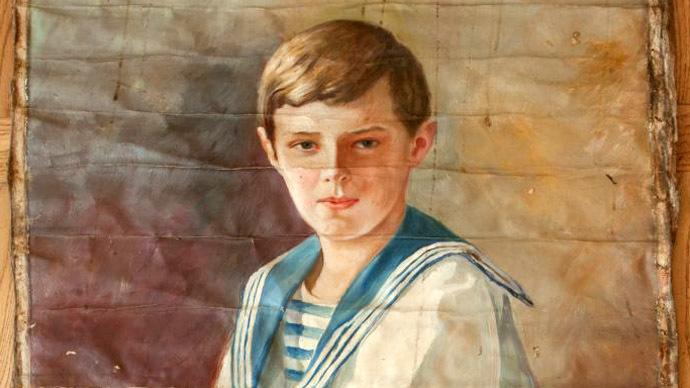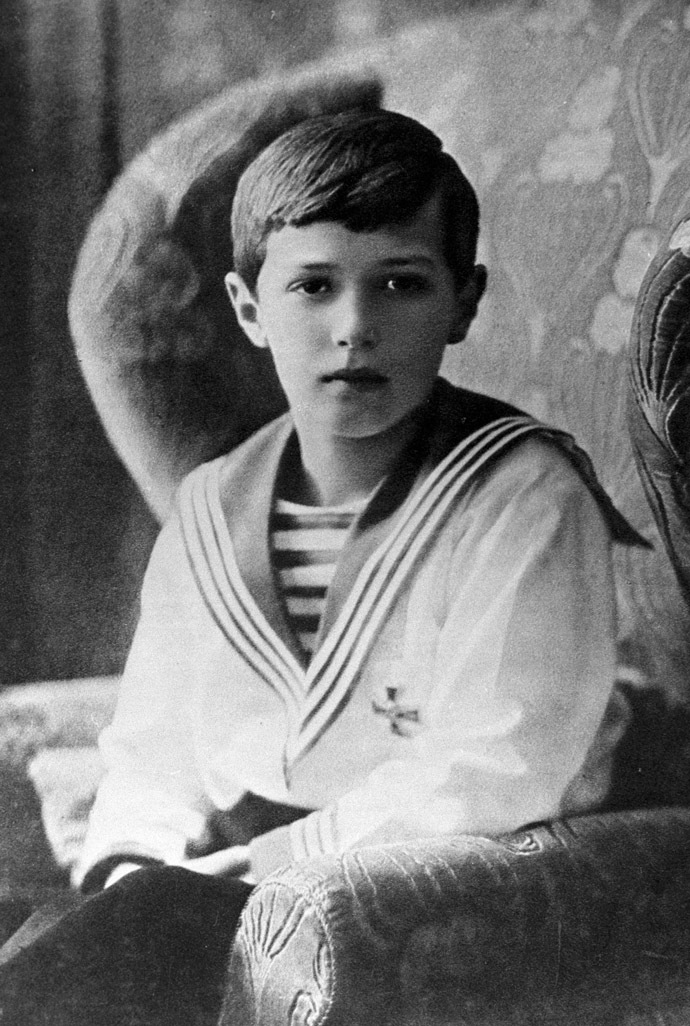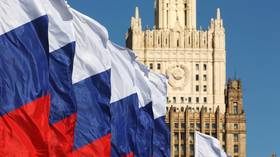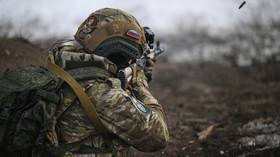Royal treasure: Hidden portrait of 'last Tsarevich' discovered in attic

Workers restoring an 18th-century building near St. Petersburg have discovered a portrait apparently depicting Tsarevich Aleksey, the only son of Russia’s last Emperor, Nicholas II, who was executed with the rest of his family in 1918.
The canvas, rolled up in newspapers dating from 1917 and 1918 and stuck in a crack in the wall, was found Wednesday by workers restoring a heritage-listed building in Pushkino, a suburb of St. Petersburg. The village is home to the former Tsarskoe Selo imperial palace, now a museum.
The 86cm x 67cm oil canvas is dilapidated, with numerous creases and a torn-off fragment. There are two Russian “П” (P) letters in the lower right angle of the painting.
The painting is a portrait of a youth, thought to be Aleksey, the
son of Nicholas II, who was forced to abdicate the throne
following the 1917 February Revolution.
“Preliminary analysis shows that this could be the portrait of Tsarevich Aleksey, a copy of one of his famous photos,” Vladislav Kirillov, head of the St. Petersburg police antiquities department, told Interfax. Kirillov added that the picture was handed over to the Tsarskoe Selo museum, where it will stay until its ownership is established.
“According to current legislation, the state has no rights to the picture. It belongs to the owner of the building,” Kirillov said.
The owner of the building, who has asked not to be identified, has promised to hand the canvas over to the Tsarskoe Selo museum, Regnum news agency reported. Museum staff said it was symbolic that the painting had been discovery in the same year the 400th anniversary of the Romanov dynasty is being celebrated.
Attempts will now be made to find out who painted the portrait. Museum experts say judging by the quality of the artwork, however, it was not a professional painter.
The building where the painting was discovered was built in 1753 by Russian architect Savva Chevakinsky. According to historians, the police chief of the Tsar’s palace lived in the house from 1905 to 1917.

“Preliminary analysis shows that this could be the portrait of Tsarevich Aleksey, a copy of one of his famous photos,” Vladislav Kirillov, head of the St. Petersburg police antiquities department, told Interfax. Kirillov added that the picture was handed over to the Tsarskoe Selo museum, where it will stay until its ownership is established.
“According to current legislation, the state has no rights to the picture. It belongs to the owner of the building,” Kirillov said.
The owner of the building, who has asked not to be identified, has promised to hand the canvas over to the Tsarskoe Selo museum, Regnum news agency reported. Museum staff said it was symbolic that the painting had been discovery in the same year the 400th anniversary of the Romanov dynasty is being celebrated.
Attempts will now be made to find out who painted the portrait. Museum experts say judging by the quality of the artwork, however, it was not a professional painter.
The building where the painting was discovered was built in 1753 by Russian architect Savva Chevakinsky. According to historians, the police chief of the Tsar’s palace lived in the house from 1905 to 1917.

















